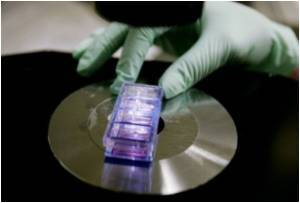
Now, using embryonic cells called 'neural crest cells' (which are similar to cancer cells in term of their invasive behaviour) and placode cells which are the precursors for cranial nerves (the equivalent to healthy cells) researchers at UCL have started to unravel this process.
They have found that when neural crest cells are put next to placode cells they undergo a dramatic transformation and start 'chasing' the placode cells. At the same time placode cells exhibite 'escape' behaviour when contacted by neural crest cells. The chasing behavior depends on the production of small chemical molecules by the placode cells that attracts neural crest cells toward them.
The authors of the study are confident that the process whereby cancer cells attached to healthy cells in order to migrate around the body is comparable. Healthy cells of the body try to escape from tumor cells, but are followed by malignant cells because the healthy cells produce an attractant for the cancer cells.
Dr Roberto Mayor, UCL Department of Cell and Developmental Biology and lead author of the research, said, "We use the analogy of the donkey and the carrot to explain this behaviour: the donkey follows the carrot, but the carrot moves away when approached by the donkey. Similarly the neural crest cells follow the placode cells, but placode cells move away when touched by neural crest cells."
"The findings suggest an alternative way in which cancer treatments might work in the future if therapies can be targeted at the process of interaction between malignant and healthy cells to stop cancer cells from spreading and causing secondary tumours."
Advertisement
Source-Eurekalert









